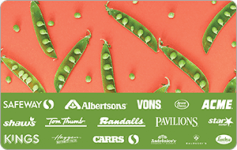Meal Prep: Save Time and Money in the Kitchen Efficiently
Meal prepping can be a game changer for your kitchen routine, offering not just convenience, but also savings on both time and money. By planning your meals ahead of time and shopping smartly, you can significantly reduce food waste and avoid those expensive impulse buys. This approach allows you to take control of your diet and finances, making healthier eating a manageable part of your lifestyle.
Incorporating meal prep into your weekly schedule can help you streamline your cooking process, ensuring you always have nutritious meals ready to go. With some strategic shopping, you can also take advantage of gift card deals or eGift cards to save even more on your grocery expenses. This not only adds value to your shopping experience but also allows you to invest in your health without breaking the bank.
With a bit of organization, you can maximize your meal prep efforts and enjoy the benefits of home-cooked meals throughout the week. You'll find that dedicating a little time to planning can lead to more efficiency in the kitchen and more savings in your wallet.
Key Takeaways
- Meal prepping helps save time and reduce waste in the kitchen.
- Smart shopping, including using eGift cards, maximizes your savings.
- An organized meal prep routine ensures healthy eating becomes easier.
Getting Started with Meal Prep
Meal prep can streamline your cooking process and help you save time and money in the kitchen. Understanding the basics and having the right tools can significantly enhance your experience.
Understanding Meal Prep
Meal prep involves planning and preparing your meals in advance. This can encompass everything from cooking large batches of food to portioning out meals into containers. Start small by choosing one or two recipes each week.
Focus on recipes that are versatile and can be reimagined throughout the week. For instance, grilled chicken can be served with rice, salad, or in a wrap.
Think about optimizing your grocery shopping experience, too. Consider using electronic gift cards or prepaid Visa cards for budgeting; this helps you stick to your planned expenses and avoid impulse purchases at the grocery store.
Essential Tools and Equipment
Having the right tools makes meal prep efficient and enjoyable. Key items include:
- Containers: Invest in a variety of airtight containers in different sizes for storage. Glass containers are reusable and safe for the microwave.
- Cutting Board and Knives: A sturdy cutting board and sharp knives will simplify food preparation.
- Measuring Tools: Measuring cups and spoons are essential for accurate portioning.
- Cooking Appliances: Consider using slow cookers or pressure cookers for easy, hands-off cooking.
Additionally, having a reliable grocery list can help you stay organized. Create a checklist for your meal prep to avoid missing any ingredients.
Smart Shopping for Meal Prep
Effective meal prep begins with smart shopping strategies that can save you both time and money. By focusing on finding the best deals, utilizing discount gift cards, and buying in bulk, you can maximize your savings while stocking up on ingredients.
Finding the Best Deals
To get the most value from your grocery budget, search for weekly promotions and coupons. Many grocery stores offer loyalty programs that can provide discounts on your purchases.
Use shopping apps that compile current deals across various retailers so you can easily compare prices. Pay attention to seasonal sales when produce is often less expensive. Additionally, consider checking local farmers' markets for fresh ingredients at lower prices.
Take advantage of digital coupons accessible through store apps or websites. Stacking these savings with in-store promotions can lead to significant reductions.
Utilizing Discount Gift Cards
Discount gift cards are an effective way to save money on groceries. You can purchase them for less than their face value, enabling you to stretch your budget further. Services like Gift Card Granny allow you to browse various gift card deals, making it easier to find the best offers.
When you frequently shop at certain stores, consider using eGift cards to maximize your savings. Look for gift card promotions that might give you bonus credits for future purchases, enhancing your shopping experience. Using gift cards alongside coupons can compound your savings significantly.
Buying in Bulk
Buying in bulk can reduce your per-unit cost, especially for non-perishable items or staples you use regularly. Look for warehouse clubs or bulk food stores that offer discounts on larger quantities.
Focus on purchasing items like grains, canned goods, and frozen produce, which have longer shelf lives. Always check unit pricing when comparing bulk versus standard sizes to ensure you’re getting a good deal.
Before committing to bulk purchases, assess your storage capacity to avoid spoilage. It's important to ensure you will use what you buy, especially for perishable items.
Buy a discounted Sam's Club eGift card
Maximizing Savings
Cutting costs in the kitchen doesn’t have to compromise the quality of your meals. By employing a few strategic approaches, you can make meal prep more budget-friendly and efficient. This section covers recipes that provide great value, creative uses for leftovers, and how to leverage gift cards to optimize your grocery budget.
Budget-Friendly Recipes
Choosing budget-friendly recipes is crucial for maximizing savings. Focus on ingredients that offer multiple uses throughout the week. For example, staple items like rice, beans, and seasonal vegetables can form the base for various meals.
Consider creating a menu that includes:
- Stir-fries: Use whatever vegetables and proteins you have on hand.
- Soups and stews: These can be made in bulk and frozen for later use.
- Casseroles: Layer ingredients to create filling meals.
Using these approaches not only stretches your dollar but also reduces food waste. Aim for recipes with few ingredients, allowing you to save both time and money.
Effective Use of Leftovers
Leftovers can significantly contribute to your savings if used wisely. With a little creativity, you can transform yesterday’s meal into a new dish.
Here are some strategies for repurposing leftovers:
- Create new meals: Turn roasted chicken into chicken salad or tacos.
- Incorporate them into breakfast: Use leftover vegetables in an omelet.
- Freeze portions: If you can’t use leftovers within a few days, freeze them for future meals.
By maximizing leftovers, you reduce waste and stretch your food budget further.
Incorporating Gift Cards into Budget
Using gift cards can be an effective way to manage grocery expenses. Consider purchasing virtual Visa gift cards, which allow for flexible spending while staying within your budget. You can buy them for specific stores or online retailers.
To make the most of your gift cards:
- Plan ahead: Use them for shopping trips you have already planned.
- Combine with sales: Use gift cards in conjunction with store sales to maximize savings.
- Check for bonuses: Some platforms offer promotions for buying gift cards, giving you an added discount on your purchases.
By strategically incorporating gift cards, you can maintain a healthy budget while enjoying your meal prep routine.
Organizing Your Meal Prep Routine
Establishing an efficient meal prep routine is essential for saving time and money in the kitchen. You can streamline your cooking process with structured planning, effective storage methods, and smart time management techniques.
Weekly Meal Planning
Begin your week by selecting meals you want to prepare. Choose recipes that share similar ingredients to reduce waste and save money. Create a grocery list based on your meal plan. This list will keep your shopping focused and efficient.
Consider incorporating eGift cards for grocery purchases to take advantage of gift card deals. This can further stretch your budget while ensuring you have the necessary supplies at hand.
Aim to prepare a mix of proteins, vegetables, and grains that can be used in multiple dishes. By planning diverse meals, you'll keep your diet interesting and satisfying throughout the week.
Prep and Storage Tips
Effective storage keeps your meal preps fresh and ready to eat. Use high-quality, airtight containers to maintain the flavor and quality of your meals.
Label your containers with the meal name and date prepared. This allows for easier identification and helps you keep track of freshness. Consider using separate containers for portioning meals versus ingredients to reduce prep time during the week.
Freeze anything you won't use within a few days to prevent spoilage. Foods like stews or cooked grains freeze well. You can defrost them for a quick meal later on.
Time Management Strategies
Maximize your meal prep efficiency with smart time management. Allocate a specific day for meal prep that fits your schedule, preferably when you have a few hours to spare.
Start with recipes that require longer cooking times, such as soups or casseroles. This way, you can prepare additional items while those dishes cook.
Set a timer for each task to maintain focus and efficiency. Aim to complete all chopping, cooking, and packing within a designated time frame. This approach keeps your kitchen organized and reduces the chance of overwhelm.
By implementing these strategies, you can create a streamlined meal prep routine that saves both time and money.

